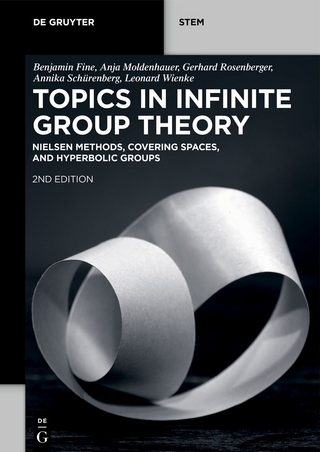
Force and Geometry in Newton's Principia
Seiten
1995
Princeton University Press (Verlag)
978-0-691-03367-9 (ISBN)
Princeton University Press (Verlag)
978-0-691-03367-9 (ISBN)
- Titel ist leider vergriffen;
keine Neuauflage - Artikel merken
This text introduces one to the reading of Newton's "Principia" in its own terms. The path of access proposed by De Gandt leads through the study of geometrization of force, resulting in a meditation on the sources and meaning of Newton's magnum opus.
This text introduces one to the reading of Newton's "Principia" in its own terms. The path of access that De Gandt proposes leads through the study of geometrization of force, resulting in a meditation on the sources and meaning of Newton's magnum opus. In Chapter I, De Gandt presents a translation of and detailed commentary on an earlier and simpler version of what in 1687 became Book I of the "Principia". Chapter II places these dynamics in the context of earlier efforts - the first seeds of celestial dynamics in Kepler, Galileo's theory of accelerated motion, and huygen's quantification of centrifrugal force - and evaluates Newton's debt to these thinkers. Chapter III is a study of the mathematical tools used by Newton and their intellectual antecedents in the works of Galileo, Torricelli, Barrow and other 17th-century mathematicians. The conclusion discusses the new status of force and cause in the science that emerges from Newton's "Principia".
This text introduces one to the reading of Newton's "Principia" in its own terms. The path of access that De Gandt proposes leads through the study of geometrization of force, resulting in a meditation on the sources and meaning of Newton's magnum opus. In Chapter I, De Gandt presents a translation of and detailed commentary on an earlier and simpler version of what in 1687 became Book I of the "Principia". Chapter II places these dynamics in the context of earlier efforts - the first seeds of celestial dynamics in Kepler, Galileo's theory of accelerated motion, and huygen's quantification of centrifrugal force - and evaluates Newton's debt to these thinkers. Chapter III is a study of the mathematical tools used by Newton and their intellectual antecedents in the works of Galileo, Torricelli, Barrow and other 17th-century mathematicians. The conclusion discusses the new status of force and cause in the science that emerges from Newton's "Principia".
| Erscheint lt. Verlag | 10.9.1995 |
|---|---|
| Reihe/Serie | Princeton Legacy Library |
| Übersetzer | Curtis Wilson |
| Zusatzinfo | 171 line drawings |
| Verlagsort | New Jersey |
| Sprache | englisch |
| Maße | 197 x 254 mm |
| Gewicht | 652 g |
| Themenwelt | Mathematik / Informatik ► Mathematik ► Geometrie / Topologie |
| Naturwissenschaften ► Physik / Astronomie ► Mechanik | |
| ISBN-10 | 0-691-03367-6 / 0691033676 |
| ISBN-13 | 978-0-691-03367-9 / 9780691033679 |
| Zustand | Neuware |
| Haben Sie eine Frage zum Produkt? |
Mehr entdecken
aus dem Bereich
aus dem Bereich
Gekrümmte Kurven und Flächen
Buch | Softcover (2024)
De Gruyter (Verlag)
CHF 76,90
Nielsen Methods, Covering Spaces, and Hyperbolic Groups
Buch | Softcover (2024)
De Gruyter (Verlag)
CHF 153,90


